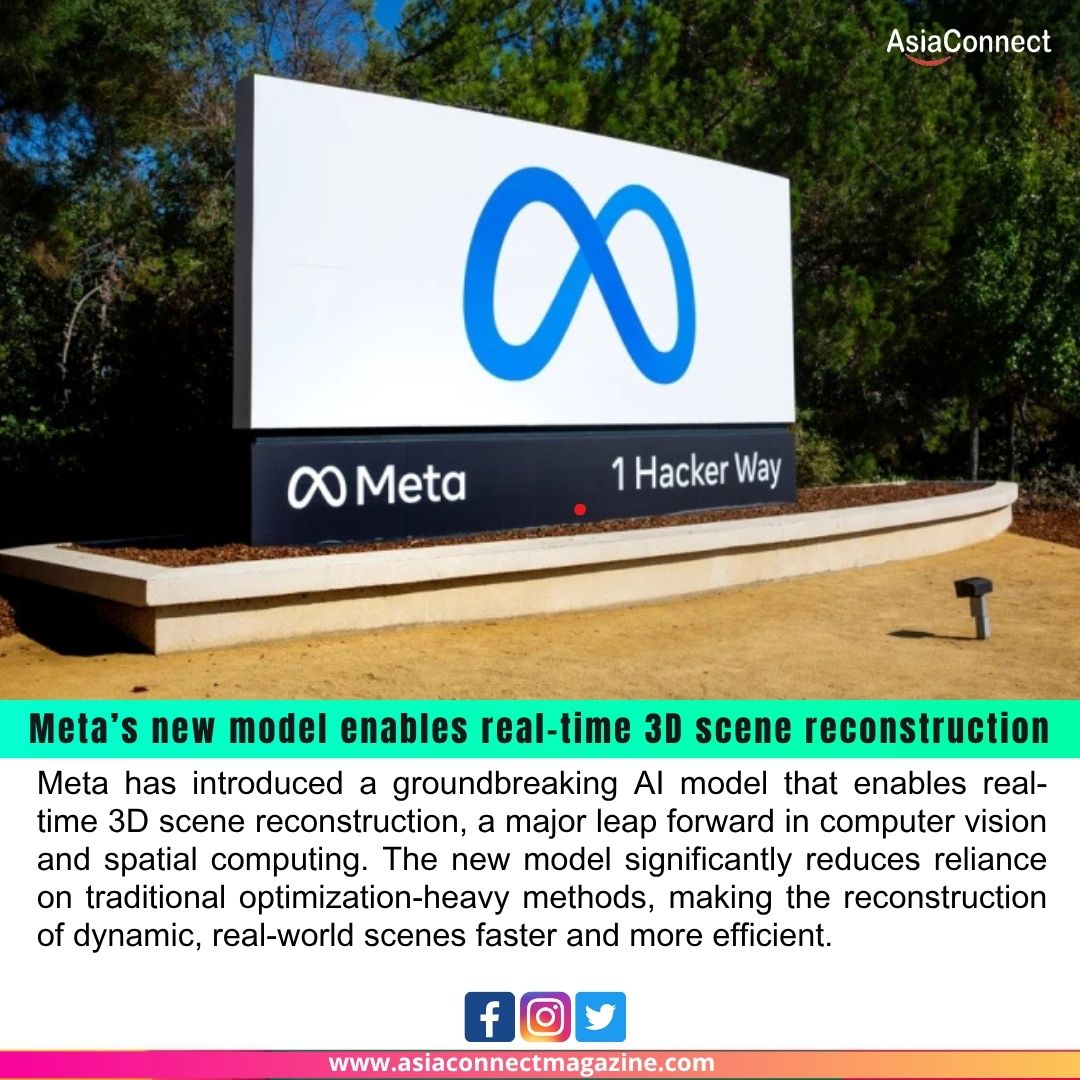Meta has introduced a groundbreaking AI model that enables real-time 3D scene reconstruction, a major leap forward in computer vision and spatial computing. The new model significantly reduces reliance on traditional optimization-heavy methods, making the reconstruction of dynamic, real-world scenes faster and more efficient.
Traditionally, 3D scene reconstruction has relied on techniques that involve intensive computation and time-consuming optimization processes. These methods often struggle to keep up with dynamic environments—such as moving objects or changing lighting conditions—making real-time performance a persistent challenge. Meta’s new AI-driven approach aims to overcome these limitations by using end-to-end learning and efficient neural network architecture to process 2D images and rapidly generate accurate 3D representations.
What Sets Meta’s Model Apart?
At the core of Meta’s new model is its ability to handle dynamic scenes with minimal computational overhead. Instead of reconstructing every frame from scratch using slow optimization techniques, Meta’s system learns to understand and predict 3D structure directly from input images or video streams. This allows it to update and refine the scene in real time, even as elements move or the perspective shifts.
This innovation is particularly useful in areas like augmented reality (AR), virtual reality (VR), robotics, autonomous vehicles, and gaming, where understanding and interacting with the environment in real time is critical. For example, an AR headset powered by Meta’s model could map a user’s surroundings on-the-fly, enabling smoother interaction with virtual objects that appear seamlessly integrated with the physical world.
Reducing Optimization Load
One of the biggest achievements of this model is reducing the dependency on non-differentiable optimization processes that require manual tuning and significant computational resources. Traditional 3D reconstruction often relies on bundle adjustment, voxel carving, or multi-view stereo, which are not only slow but also inflexible when dealing with dynamic scenes.
Meta’s model uses neural implicit representations and learning-based methods to bypass these bottlenecks. This not only speeds up the reconstruction process but also opens up new possibilities for real-time applications where speed and adaptability are crucial.
Real-World Applications
The real-time capability of Meta’s model can be applied across various sectors:
- AR/VR: Enabling real-time scene mapping and interaction for immersive experiences.
- Autonomous Systems: Enhancing navigation and situational awareness in robotics and self-driving vehicles.
- Gaming: Allowing developers to create dynamic, responsive game worlds that react to player movement.
- Smart Surveillance: Offering better environmental awareness for security systems and crowd monitoring.
A Step Toward the Metaverse
Meta’s investment in 3D spatial technologies aligns with its broader vision of building the Metaverse—a fully immersive digital world where real-time interaction and presence are essential. The ability to reconstruct and understand dynamic 3D environments in real time brings us closer to this vision.
As this technology continues to evolve, Meta’s new model could become a cornerstone for future spatial computing applications, combining efficiency, accuracy, and scalability in ways that were previously out of reach.





